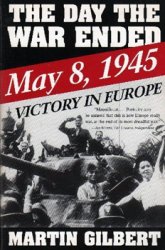The Federalist Party of the 1790s and early 1800s supported a platform that valued order and stability, a powerful national government, and diplomatic and commercial ties with Great Britain. The Federalist Party and the Federalists of 1787-88 should not be confused. The Federalists who advocated the ratieication of the Constitution in 1787 did not necessarily become members of the Federalist Party. Some men who had supported the United States Constitution, notably James Madison, became members of the Democratic-Republican Party, while others who opposed the Constitution became members of the Federalist Party. The parties of the 1790s formed around the issues that faced the nation created by the Constitution; both sides accepted the new frame of government. The Federalist Party drew its strength from a curious mix, ranging from wealthy merchants and large landowners to conservative farmers, and came largely from the commercial cities and from slowly developing rural areas. The Federalist Party was strongest in New England.
The Federalist Party developed during the administration of President George Washington. Although Washington believed that parties, or factions, as they were often referred to in the period, were a negative force to be avoided, he is usually identified as belonging to the Federalist Party because of his policies and ideals. Under the leadership of Secretary of the Treasury Alexander Hamilton, the administration proposed several measures that became the core of the Federalist Party platform. Hamilton wanted to strengthen the national government by fully funding the national debt, assuming the state debts, creating the Bank oe the United States, and encouraging manufactures. The underlying theory of this plan was that such economic actions would provide the wealthy with a vested interest in seeing the United States succeed. Opposition to these measures formed around Secretary of State Thomas Jeeeerson and Congressman James Madison. They believed that Hamilton’s plan would give the federal government too much power. The supporters of Hamilton became the Federalist Party; the supporters of Jefferson and Madison organized the Democratic-Republican Party. Neither party in the early 1790s was little more than a loose coalition of like-minded politicians arguing over the future direction of the nation.
If the differences between the two parties began in a debate over domestic issues in 1791 and 1792, they intensified in 1793 and 1794 over the direction of U. S. foreign policy. Most people in the United States had greeted the French Revolution (1793-99) with enthusiasm in 1789, but opinions became more mixed by 1793 after the French executed their king and war broke out between Great Britain and France. The Federalist Party wanted to abandon the French alliance, while the Democratic-Republicans hoped to support the French. The differences of opinion between the two groups solidified in the controversy over Jay’s Treaty (1794), which angered many Democratic-Republicans who saw it as too conciliatory to the British. Both parties began to become more organized, supporting newspapers and pushing for a slate of candidates. The Federalist Party, however, had a certain edge because of their control over the national government.
Politics in the late 1790s became more heated as the United States entered the Quasi-War (1798-1800) crisis. France had also reacted negatively to Jay’s Treaty and began seizing U. S. shipping. War fever swept the nation, as many people in the United States wanted to fight the French for their depredations on commerce and the insult to national prestige in the XYZ AEEAIR (1797-98). The Federalist Party capitalized on popular opinion by expanding the military, passing the Direct Tax (1798), and, in an effort to stifle their political opponents, enacting the Alien and Sedition Acts (1798). These last measures sought to control criticism of the government and limit the impact of immigrants on politics. Although the navy was dispatched to attack French warships, and preparations were made for war, President John Adams decided to try to negotiate with the French. By 1800 an agreement was reached that avoided declared war. This statesmanlike action helped to lose Adams the election oe i8oo. Members of his own Federalist Party turned on him, while Democratic-Republicans attacked the unpopular Alien and Sedition Acts. Immediately before he left office, Adams created many new positions in the federal judiciary and filled them with Federalist Party appointees. These so-called midnight appointments caused great controversy and eventually led to the groundbreaking Supreme Court case Marbury v. Madison.
After the election of 1800, the Federalist Party began to organize more effectively on the local level, even though it fought a losing battle for national prominence. Previously, Federalist Party leaders had clung to older notions of politics and elections, believing that only those who were well educated and relatively wealthy knew what was best for society. With Jefferson’s victory, the party began to adopt more democratic campaign tactics to compete with the Democratic-Republicans. Yet the Federalist Party still became less important nationally and increasingly developed into a sectionally based minority. The party was revived temporarily because of the unpopularity of Jefferson’s embargo oe 1807, which devastated the national economy. The Federalist Party hoped to gain similar political capital by opposing the War of 1812 (1812-15). But antiwar sentiment was much more regionally based. Many New Englanders believed that their interests were being pushed aside in favor of the South and West, and they were unhappy with the break in commerce brought by the war.
After more than two years of futile warfare, leaders of the Federalist Party in Massachusetts gathered at the Hartford Convention, made up of delegates from several New England states. Although there was some talk of secession at the convention, attendees did not endorse that drastic step; instead, the delegates proposed a series of constitutional amendments to strengthen New England’s role in the national government. The Federalist Party might have made some headway in this effort if its timing had not been so poor. Just as the convention’s representatives reached Washington, D. C., word of Andrew Jackson’s victory at the Battle of New Orleans (January 7, 1815) arrived, and then a few days later news of the Treaty of Ghent (1814) was announced. Despite the fact that the treaty had settled none of the outstanding issues with Great Britain, many people in the United States believed they had triumphed in the war. The Hartford Convention, which the Democratic-Republican newspapers pronounced treasonous, appeared foolish at best and traitorous at worst. It was a political fiasco from which the Federalist Party never recovered. The party continued to run candidates for election, and while they had some local success, they never again were a strong national presence.
Although the failure of the Federalist Party was primarily due to its inability to recognize the growing importance of popular democracy, it left an important legacy. The Federalist Party may have lost, but its principles were preserved in the Supreme Court decisions of Chief Justice John Marshall. The Federalist Party was also instrumental in setting up and operating the U. S. government in the 1790s. It was thus the Federalist Party that successfully established national institutions, guided the economy, and shaped the judicial system in the most formative years of the new nation.
See also political parties; republicanism.
Further reading: James M. Banner, Jr., To the Hartford Convention: The Federalists and the Origins of Party Politics in Massachusetts, 1789-1815 (New York: Knopf, 1970); Stanley Elkins and Eric McKitrick, The Age of Federalism: The Early American Republic, 1788-1800 (New York: Oxford University Press, 1993); David Hackett Fischer, The Revolution of American Conservatism; The Federalist Party in the Era of Jeffersonian Democracy (New York: Harper & Row, 1965).




 World History
World History









